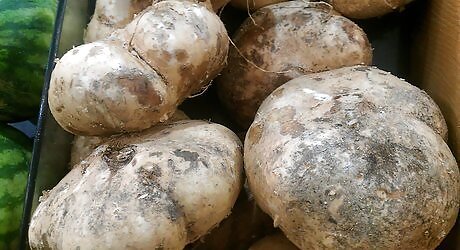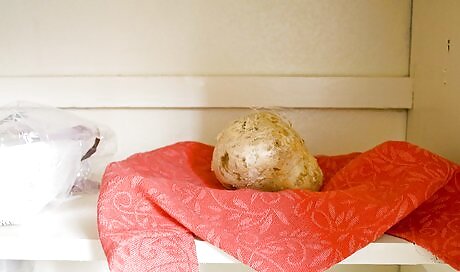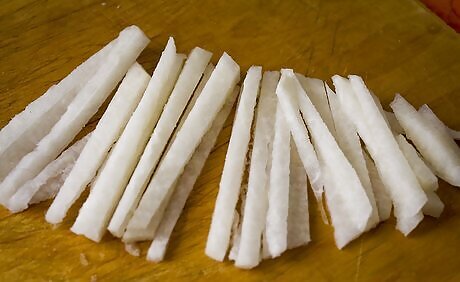
views
X
Research source
Learning how to choose and buy jicama is the first step towards incorporating this vegetable into your cooking.

Find a store near you that sells jicama. Jicama is becoming more common in both American and world cuisine, and as such it has become relatively easy to find. Many grocery stores will carry jicama in the produce section, especially between fall and spring when it is in season. If you can't find it at a regular grocery store, try an organic foods store or a farmer's market. Specialty Mexican grocery stores may also carry jicama.

Choose small to medium size jicama roots. When picking out jicama, look for roots that are smaller in size. As the root grows larger, its flavor dissipates and its texture becomes slightly tougher and loses its appealing crispness.

Look for roots that have smooth, shiny, unblemished skin. Jicama's thick skin protects the flesh inside from rotting or drying out. Choose ones with smooth, shiny, and unblemished skins, as these will have the best-preserved interiors and will be least susceptible to bacterial and fungal infiltration. Dull and blemished jicama should be avoided. Check the stem end for green discoloration and do not purchase - this is mold.

Store the jicama properly. Once you have purchased your jicama, make sure to store it correctly. Jicama should be stored in a cool, dry place and left uncovered. Even a small amount of moisture can lead to rotting, so avoid putting jicama in the refrigerator. Jicama can be stored for up to 3 weeks. If storing cut jicama, cover the root loosely with a paper towel and place it in a plastic bag. The bag can be stored in the refrigerator for up to 2 weeks. Before use, you may want to cut away some of the exposed flesh if it has become soggy or discolored.

Prepare the jicama as desired. Jicama is often consumed raw in salads or slaws. It can also be cooked in stir fries, soups, or other preparations. Its culinary use and flavor is very similar to water chestnuts or apples.




















Comments
0 comment